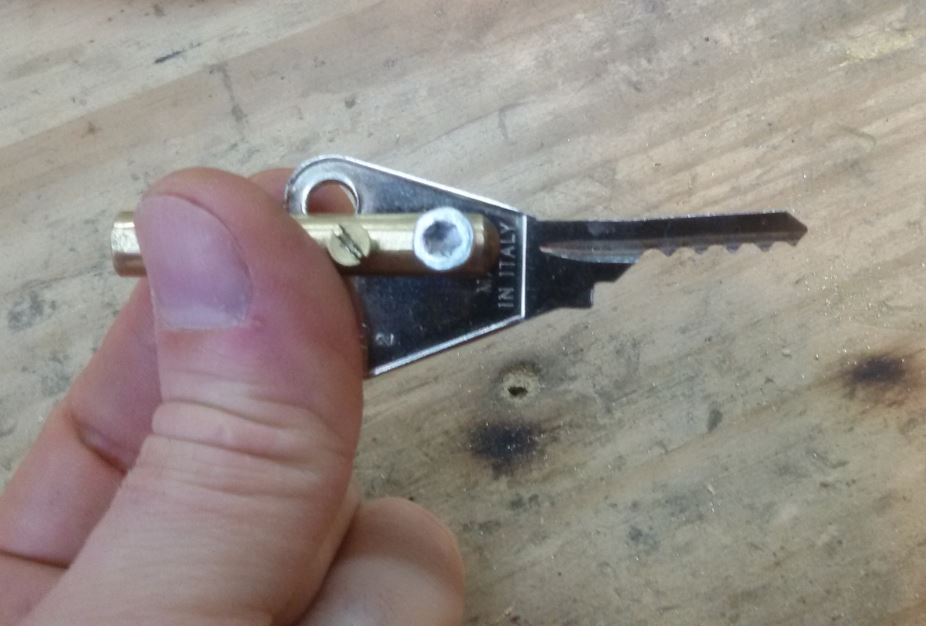Percussion
Bumpkeys are necessary to open using percussion
Using a standard lockpicking method, we have to set the cylinder pins one after another. Using percussion, we forget about the setting order and the height!
Percussion is a rather effective method on the pin cylinders that we know well. Very fast and particularly simple this technique is based on the principle of energy transmission as illustrated by Newton’s cradle:

Thus by cutting a key to maximum depths we obtain a “key” (called bumpkey) that will be enough to insert into the cylinder and then shock it so that the shock wave is transmitted to the pins, thus enabling the percussion:

The purpose of this energy transmission is to propel the passive pins below the shear line. During the short time when the passive pins are expelled it will be possible to rotate the rotor, without respecting any order of placement!
There are of course countermeasures to this method, as well as there are tricks to improve its results. A hammer intended for percussion distributes the shock wave better. However, it only takes one untouchable pin to counter the method…
Pick guns
Pick guns are very effective tools and specially designed for percussion technique, here we see an example of operation in internal view. Of course, you must start by inserting the blade (left) against the top of the pins. When you press the trigger with your fingers, the black piece compresses the spring of the striker. When it reaches the end of the stroke, the striker (which is also subject to its own spring not visible in the photo) then shocks the head (which holds the blade) which makes the blade slam against the top of the pins:

This tool allows the blade to shock the pins from top to bottom and no longer on the slopes of the pins as does the bumpkey. This improves the results because the movement is performed in the direction of the pin wells.
It is possible to make a pick gun by taking advantage of the relative elasticity of a hanger for example … But you can also buy an electric pick gun that provides much better results.
Be curious and inventive!
Co-authors: Fabien, Anaëlle, Bémol, Stéphane.




